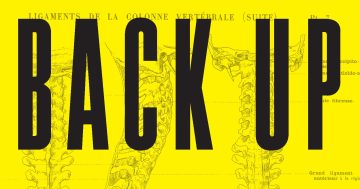Emma Malcolm* says researchers at Australia’s national science agency CSIRO, have shown for the first time how tricyclic antidepressants (TCAs) work against nerve pain, paving the way for further research and new therapies to treat the debilitating condition.
 Nerve pain affects 1 in 20 Australians. It is usually chronic and can be experienced for a range of reasons such as cancer, diabetes, trauma, infection, and multiple sclerosis.
Nerve pain affects 1 in 20 Australians. It is usually chronic and can be experienced for a range of reasons such as cancer, diabetes, trauma, infection, and multiple sclerosis.
Its symptoms vary from shooting or throbbing pain, burning, freezing or electrical shock sensations, tingling, itchiness, oversensitivity or numbness.
Although TCAs are frequently prescribed for nerve pain, why and how they work to reduce pain hasn’t been fully understood until now.
CSIRO scientist and leader of the research, Adjunct Professor Peter Duggan said he hoped the discovery would lead to the development of a new type of drug that worked in a similar way, without any potential side effects.
“These types of antidepressants are commonly used to treat pain, so we know they can be effective, but until now we haven’t understood what is happening at a cellular level,” Adjunct Professor Duggan said.
“Now we understand how they work, the next step is to look at developing whole new therapies that target the same nerve receptors and eliminates any potential side-effects.”
The research was published in RSC Medicinal Chemistry, by a multi-disciplinary team of researchers from CSIRO, The University of Queensland’s Institute for Molecular Bioscience and Monash University to demonstrate exactly how 11 TCAs and 2 closely related drugs worked to block pain, and identified which ones were most effective.
Dean of the Faculty of Pain Medicine at the Australian and New Zealand College of Anaesthetists and Clinical Associate Professor at Deakin University, Michael Vagg sees the human cost of chronic pain as well as the broader social and economic impact it has for our community.
“Nerve pain is highly disabling and ruins lives.
“The best current treatments only work to a useful degree on every third or fourth person who receives them,” A/Professor Vagg said.
“Tricyclic drugs have been used for decades in treating nerve and musculoskeletal pain and are still the most likely drugs to help despite all the effort that has been put into researching new treatments.
“We have not had any really effective new treatments for nerve pain for a long time and this work opens up the possibility of designing a new class of drugs with improved safety and effectiveness.”
With further work already underway, the team is aiming to provide the scientific basis that leads to the design of more effective drugs to improve the lives of people living with nerve pain.
CSIRO is helping Australia’s biomedical industry grow locally and compete globally through innovative science and technology.
CSIRO’s commercially-minded approach to research and development attracts local industry ready to partner and progress ideas into biomedical innovations.
*Emma Malcolm, Communication Manager, Manufacturing at CSIRO.
This article first appeared at csiro.au.











